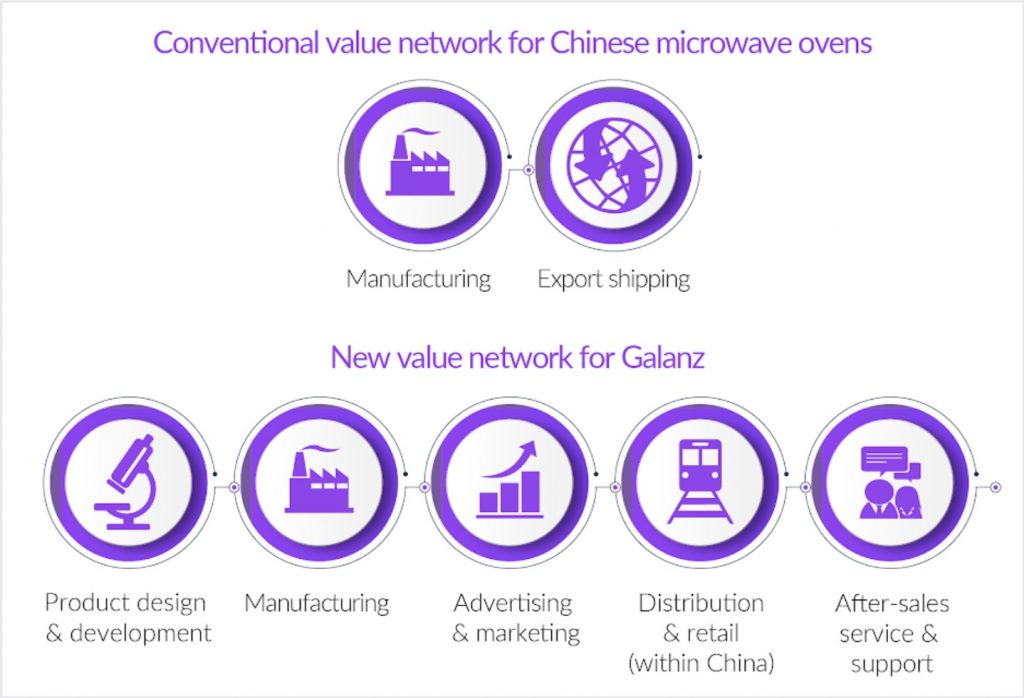This piece was co-authored by Christimara Garcia, a volunteer at the Christensen Institute and founder of Catalyze Innovations Initiative, a Brazilian market-creating innovation action tank.
In the early 1850s, American inventor and entrepreneur, Isaac Singer, was often “shown the door” the moment he brought up his idea to make sewing machines accessible to average Americans. There was just no way it would work, many investors reasoned. Sewing machines were expensive products reserved for highly skilled professionals. If, by some miracle there was demand for his sewing machines, how would Singer manufacture, distribute, sell, and service them? It was inconceivable. Considering the fact that he would have to build this entire business infrastructure for a market that didn’t yet exist, it seemed impossible.
With the benefit of hindsight, we know that his I.M. Singer & Co. was wildly successful. In fact, the market-creating organization did so well that he expanded to Europe, Asia, and Africa, becoming one of the world’s first truly multinational private companies. Simply put, by transforming a complicated and expensive product into one that was simple and affordable, Singer’s market-creating innovation enabled him to tap into a vast and profitable new market made up of people who’d previously been ignored. We call this segment of the population “nonconsumers.”
Fast forward more than 170 years and Loft, a Brazilian company, is working hard to transform traditional real estate in Latin America, where a lack of data transparency, excessive bureaucracy and a disjointed marketplace makes buying and selling apartments needlessly expensive. Founders Mate Pencz and Florian Hagenbuch started the digital real estate platform in 2018 to “simplify the purchase and sale of apartments by bringing improved organization, data and efficiency to the real estate market.” But leveraging data to accurately price apartments and increase transparency aren’t the only things Loft does. The company also offers renovations, financing, and real estate advisory, offering an “end-to-end home buying and selling process.” The company sees a $6 trillion opportunity in the Latin American residential real estate market.
In the same way I.M. Singer & Co. needed to build an entirely new system—design, manufacturing, distribution, sales, and service—in order to make the sewing machine affordable and accessible to millions of people all over the world, Loft is also building a new underlying business infrastructure so millions of Latin Americans can afford a home. What Singer necessarily built, and what Loft is also building, is a new value network. New research from the Christensen Institute reveals that they’re not alone. Of the 100 market-creating organizations studied—spanning history, industry, and the globe—every single one developed a new value network to reach nonconsumers.
The road to market-creating innovations is paved with new value networks
A value network represents the collection of upstream suppliers, downstream channels to market, and ancillary providers that support a shared business model within an industry. It’s called a value network because each activity adds value to the end product, but it also adds cost.
Because conventional value networks in many industries add too much cost to the product or limit its accessibility in other ways, they’re unable to meet the needs of nonconsumers. Consequently, innovators aiming to serve this segment of the population need to redefine their business activities and cost structure so that nonconsumers can afford their product, while still offering their organization a path to profitability.
For instance, Galanz, now a world leader in home appliance manufacturing, built a new value network from the ground up in the early 2000s when it created a new market for affordable microwave ovens in China. Whereas other Chinese manufacturers tended to focus on export markets, Galanz needed to build showrooms, factories, and developed distribution lines within China in order to get its products to local customers. Within two years of beginning production, it had created a national sales network of almost 5,000 stores. It even opted to advertise through newspapers instead of TV, thus saving money and enabling it to instruct many of its first-time customers how to use microwaves.
How a new value network made Chinese microwaves a reality for local nonconsumers

It’s important to note that the process of building a new value network takes adaptability. Innovators creating new markets need to operate with the expectation that their final business will look different from the one they envisioned on the day they founded their company. Just as every organization studied created a new value network, it was equally true that not one of them followed an entirely predictable, deliberate strategy from day one. This is due not only to the fact that market-creating organizations often operate in unpredictable environments, but also because they serve nonconsumers whose needs have previously been ignored by conventional products. It’s unrealistic that any entrepreneur, no matter how savvy or in tune with local people, will perfectly understand the needs of these nonconsumers from the outset. Instead, the path to success requires openness, flexibility, and many iterations to zero-in on how best to address the problems nonconsumers want solved.
With the advent of digital technology in emerging economies, such as mobile phone penetration and widespread Internet usage, many innovators are finding new and creative ways to dismantle traditional value networks in order to profitably serve nonconsumers. We’ve seen it with Nubank, which integrated mobile technology into its value network in order to make financial services available for those who didn’t previously have access, and we’re seeing it with Loft, where the founders are leveraging digital technology to make buying and selling homes more affordable.
With or without the help of technology, new value networks that make products simple and affordable are an important catalyst for shared prosperity. Given the vast nonconsumption that exists for a myriad of products and services in emerging economies today, there’s widespread opportunity for market-creating organizations. Beyond creating significant wealth for themselves, they have the potential to help lift millions out of poverty.
To learn more, see: Making your own luck in emerging economies: Six innovative strategies for creating new markets


